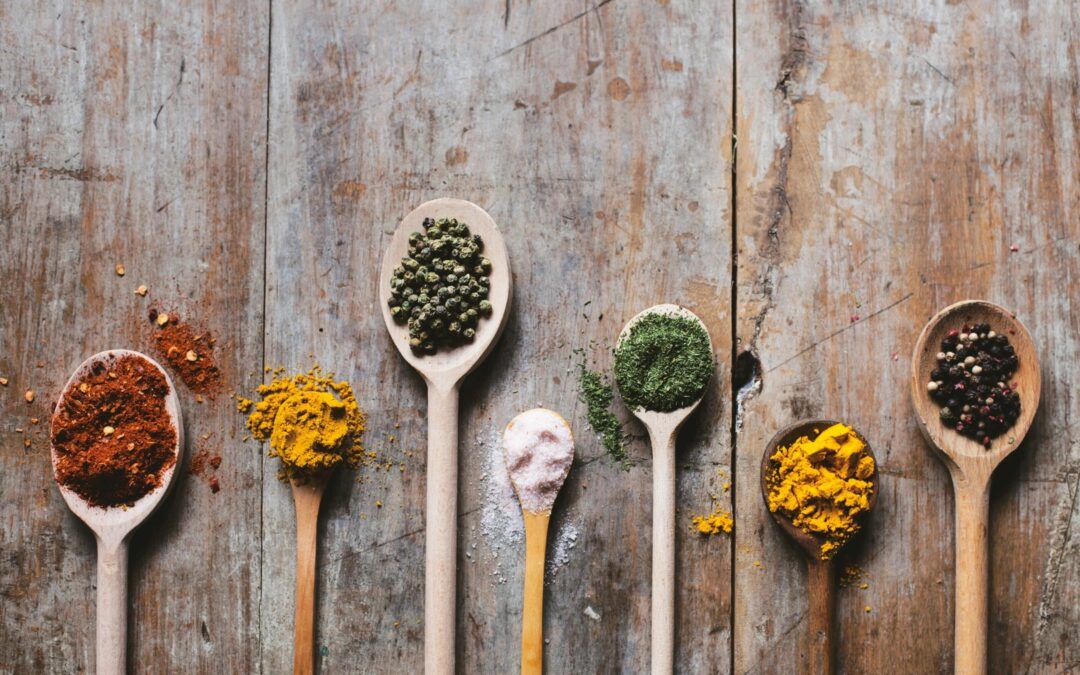Fall and Winter Essential Herbs
Why herbs?
Herbs are an integral part in our Ayurvedic practice. They are powerful tools that help with healing the mind and addressing emotions. They have the ability to make us more open to change, calm anger and create better quality communication. Herbs aid the body in healing the root causes of symptoms, and are a holistic and natural healing way to enhance the body’s natural functions. There are many ways to consume herbs: in tea, with ghee and honey, in pill form or just with water.
As the seasons change from Autumn (Vata) to Winter (Vata and Kapha), consider adding these herbs into your life.
Which herbs?
- Amla (Indian Gooseberry)
- Amla is derived from the tree Amalaki, which originates from the foothills of the Himalayas.
- Amla is beneficial for the Winter season due to its stable and high Vitamin C content, and is a natural antioxidant and anti inflammatory.
- 1-2 grams of Amla can be used with sesame, honey and ghee in the morning and will counteract the slow and unmotivated feelings brought about by the transition into the Vata–Kapha season.
- Ashwagandha (Winter Cherry)
- Ashwagandha is the root from the Withania shrub, considered a weed in the drier parts of India.
- Adding a bit of powdered Ashwagandha to your morning tonic or taking it in pill form will increase your energy throughout the day.
- This herb is used to treat general debility and exhaustion which is more widely experienced during Winter, through the nervous, endocrine and cardiovascular systems.
- Ashwagandha is a slow acting herb, meaning its healing properties take about a week or more to begin to show in the body.
- For general rejuvenation, take 1 gram with ghee, honey and milk before bedtime.
- It is also possible to take Amla and Ashwagandha together, which brings vitality to a higher state.
- Tulsi (Holy Basil)
- This herb is from the tulsi plant leaves (and sometimes the seeds and root) and is one of the three most sacred herbs in India. It is grown in homes and near temples, as it is believed to purify the air by spreading its satvik(spiritually uplifting) qualities.
- Tulsi is a Pitta designated herb, which means it is a diaphoretic and is good for combatting fevers and the flu.
- To consume tulsi in the traditional way, take 3 teaspoons of dried tulsi brewed in water, three times a day. To consume tulsi for Winter and Fall sicknesses like coughs, colds and throat problems; boil 11 tulsi leaves, some black pepper, a pinch of salt and a pinch of ginger in a cup of water until reduced to half. Take this three times a day.
Our Agni, or digestive fire, is strong during the Winter, and it is important to maintain it’s vitality through warming herbs and spices. Some herbs and spices to consider adding into your meals during winter time include turmeric, nutmeg, paprika, ginger, cinnamon and black pepper.
**Please be sure to consult with your doctor if you are currently on any medications or prescriptions that might interfere with these herbs healing process.
References:
https://lifespa.com/about-lifespa/ayurveda/new-to-ayurvedic-herbs/
https://www.ekhartyoga.com/articles/wellbeing/ayurvedic-advice-for-a-healthy-winter
https://www.gaiaherbs.com/blogs/seeds-of-knowledge/the-essential-guide-to-ashwagandha-everything-you-need-to-know
https://www.banyanbotanicals.com/info/blog-the-banyan-insight/details/6-essential-ayurvedic-herbs-for-fall-and-winter/
Rasayana: Ayurvedic Herbs for Longevity and Rejuvenation (2002) by H.S. Puri
The Way of Ayurvedic Herbs (2008) by Karta Purkh Singh Khalsa and Michael Tierra
